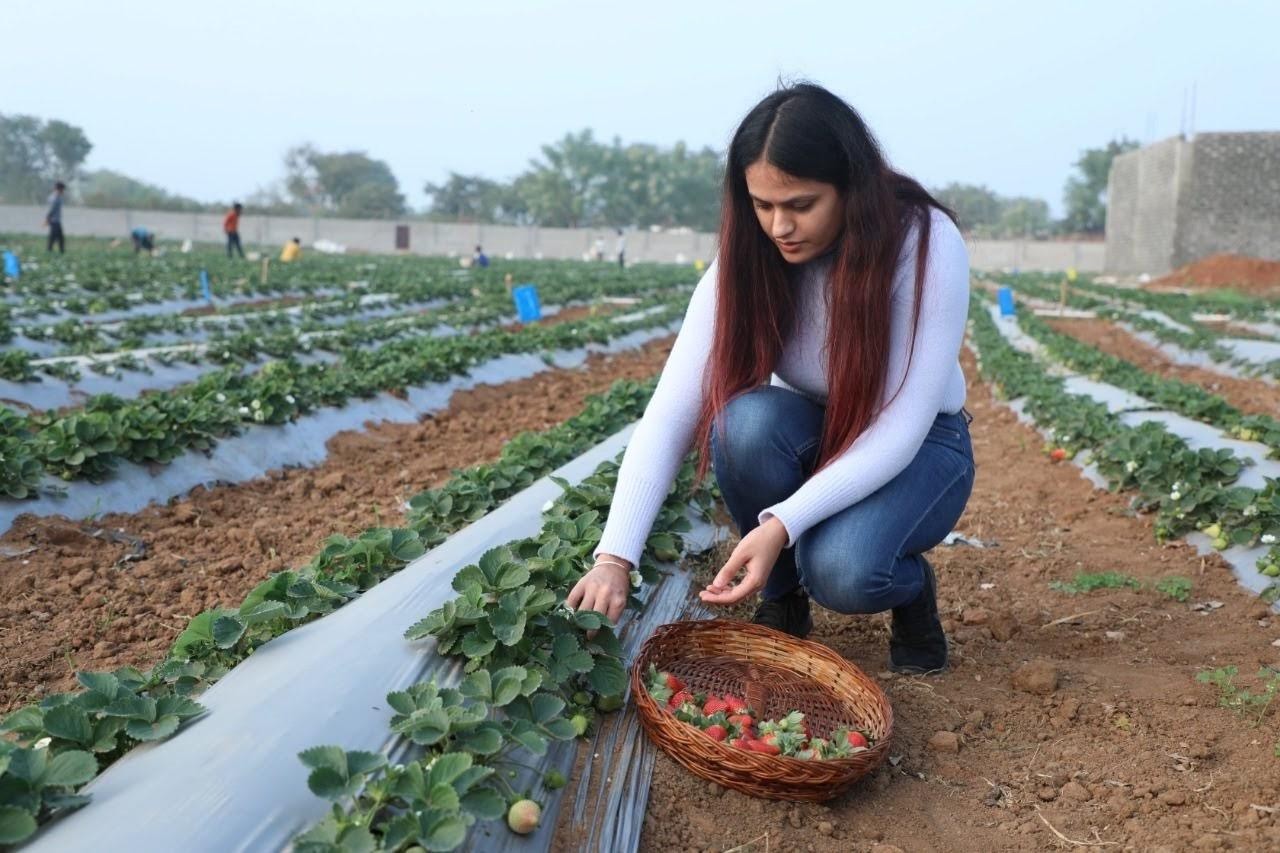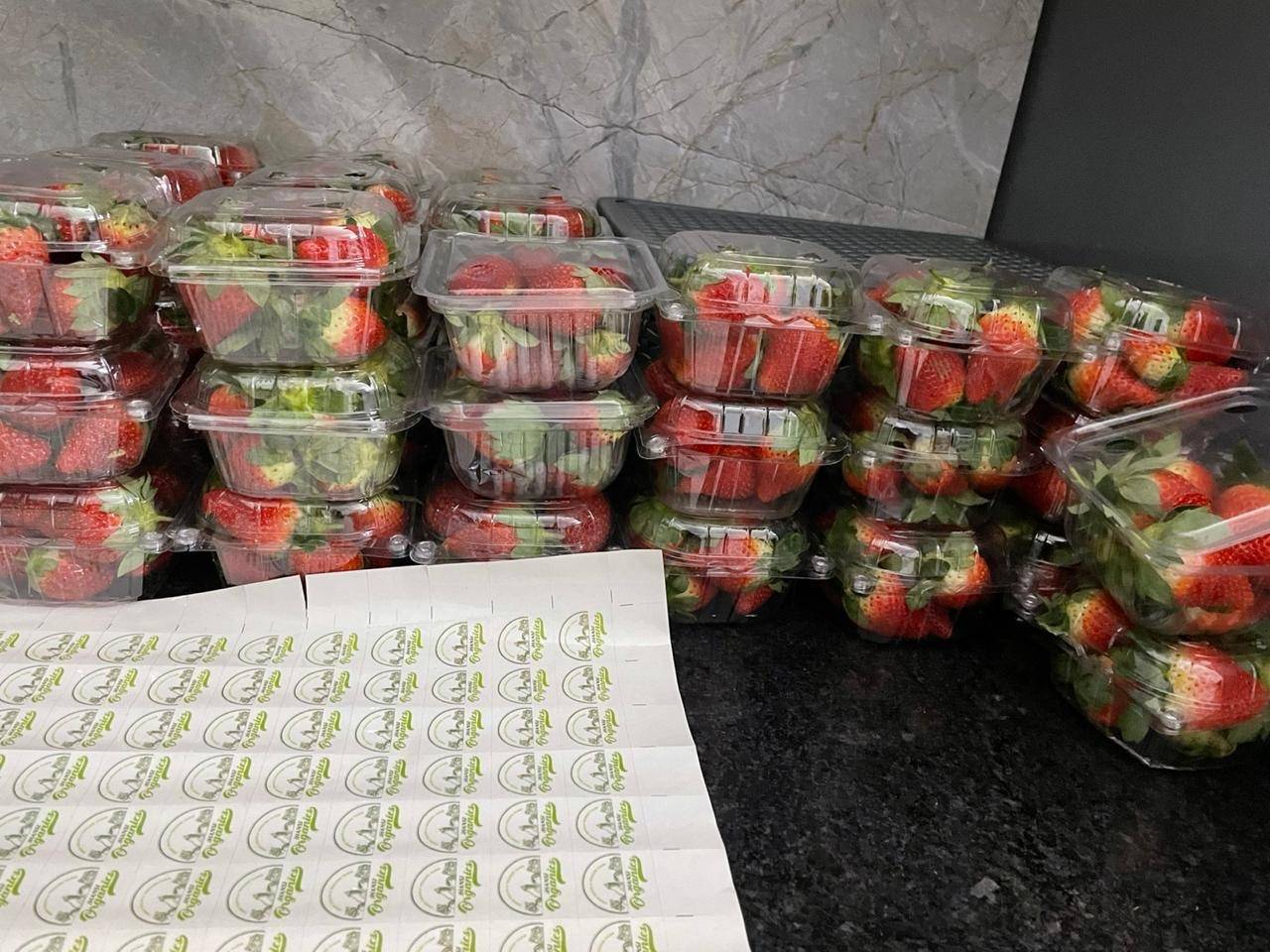Every year, during the summer months, the residents of the Bundelkhand region, between Madhya Pradesh and Uttar Pradesh, battle water scarcity. According to news reports, in 2020, water scarcity was a bigger crisis in this region than the coronavirus pandemic.
But, 23-year-old Gurleen Chawla, a resident of Jhansi and a law graduate from Indian Law Society’s (ILS) Law College, Pune, has kickstarted a revolution by growing strawberries in this water-parched region.
How? It all started in her terrace garden.
“When I was back home at Jhansi during the lockdown, I decided to take up a new hobby and keep myself occupied by growing vegetables and fruits on our terrace. Initially, I planted kitchen staples including tomatoes and chillies. But, strawberries are my favourite fruit and I consumed it regularly when I was in Pune. So, I decided to try growing that too,” says Gurleen.
Now, she grows the fruit on 1.5 acres of land and makes a living by selling 60 to 65 kilograms of it.

From growing them on her home’s terrace to launching a business, Gurleen shares how she started growing strawberries in a water-scarce area.
Strawberries: A ‘low-maintenance’ fruit
In May 2020, when Gurleen decided to try her hand at growing strawberries, she reached out to a nursery in Pune that was selling the plant’s seedlings.
“I purchased 15 saplings and had them delivered to my home. I planted them in cocopeat bags and watered them regularly. To ensure they grew healthily, I did a lot of research online. That is when I learnt that strawberries grow well on soil that is loose and that it has a low water-retention capacity,” says Gurleen, adding that the plants grow well in low temperatures and require low maintenance because they are not prone to pests.
Within a few weeks, 10 of the saplings had tiny strawberries growing on them. But, these did not grow to a full-size. So, Gurleen plucked the tiny berries and ate a few only to realise they tasted delicious even though they were not full-size.
“After further research and speaking to other strawberry farmers, I learned that planting it in coco peat was one of the reasons for failure. Then I thought, why not grow these on the ground instead of my terrace,” says Gurleen, adding that she used the land that her father, a businessman, had purchased many years ago.
The seven-acre plot was located a few kilometres away from her home and had been left empty because the family had not decided what to do with it yet. Gurleen also says that before her father purchased the land, it was used by local farmers to cultivate vegetables.
“My parents also thought it was a good idea but they suggested I use only a few acres of the land for growing strawberries and use the rest for cultivating vegetables. Apart from this, I also took the help of several organic farming consultants that I met personally and online. They helped me understand how to prepare the land, its soil structure, setting up drip irrigation, how much water the crops would need and more,” says Gurleen.
Expanding the strawberry cultivation
By November 2020, the land had been cleaned, ploughed and levelled. But to grow strawberries in the 1.5 acre-land, the soil was then raised and mulching bags were placed to hold it in place.
“The soil is raised to ensure there is no water stagnation, and the rows were lined with a drip irrigation system. I purchased 20,000 seedlings from Pune and planted them by mid-November. Every day, only 10 minutes of water supply is required for all these plants,” says Gurleen.
On 25 December 2020, Gurleen’s plantation had blossomed and how. But some of her consultants had warned her that the first harvest would not be as good as the ones that followed. So, she plucked around 12 kilos of the fruit that she used for her own consumption.
“On 28 December 2020, there was a second round of harvest. The fruits were full-size and we got another 12 kilos,” says Gurleen, adding that she distributed these among friends and neighbours.

Apart from strawberries, on the seven-acre property, she also cultivates a wide variety of vegetables and fruits, including broccoli, cabbage, cauliflower, tomatoes, papayas, avocados and more.
A strawberry fest
In a few weeks, Gurleen collaborated with supermarkets, fruit shops, restaurants and some home bakers to supply her produce. She also launched a website — Jhansi Organics to market her produce locally.
Till date, she continues to harvest 60-65 kilos of strawberries every day and sells them at Rs 300/kg.

Rachna Arora, who runs a 70-year-old restaurant named Navbharat in Jhansi, says that buying strawberry produce from Gurleen has been a gamechanger for her business.
“Earlier we were purchasing strawberries from supermarkets that source the fruit from elsewhere. At that time, we would have to throw out many strawberries because of the damage during transit. Since 17 January, I have purchased 12 kilograms of strawberries from Gurleen. The fruits are always fresh and very juicy. I have been using them to make desserts, milkshakes, pastries and ice creams,” says an excited Rachna.
Though Gurleen had established a supply chain, she realised there was very little awareness about strawberries in her area. So, she decided to host a month-long Strawberry Festival that began on 16 January. To do this, she had to get permission from the government and at that time the Chief Minister of Uttar Pradesh appreciated her achievement.
As part of the festival, Gurleen invited restaurants and individuals to participate in various competitions, from their homes, to cook using her strawberries.
She says, “On Sundays, we also host a small gathering at different locations where people can buy the strawberries, try strawberry-based dishes made by partner restaurants, and learn more about the cultivation methods.”
Gurleen’s efforts were also lauded by Prime Minister Narendra Modi during his first 2021 radio address — Mann Ki Baat.
To know more about Gurleen’s farm follow her page on Facebook. If you live in Jhansi, Bundelkhand you can purchase strawberries via her website.
(Edited by Yoshita Rao)
No comments:
Post a Comment